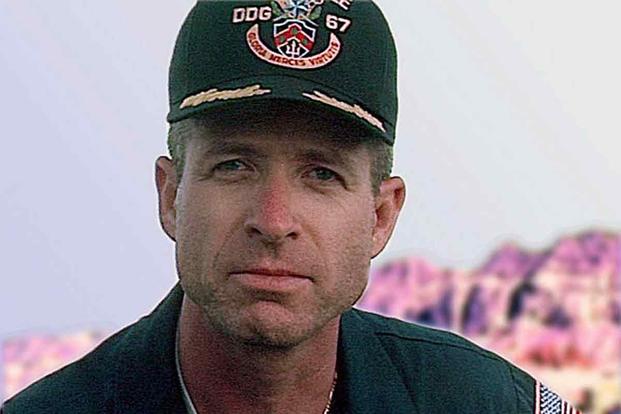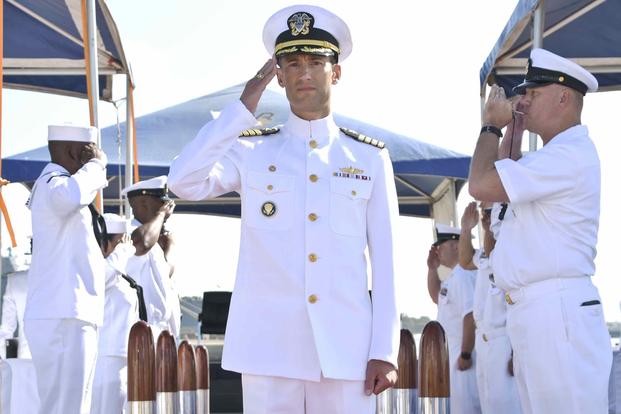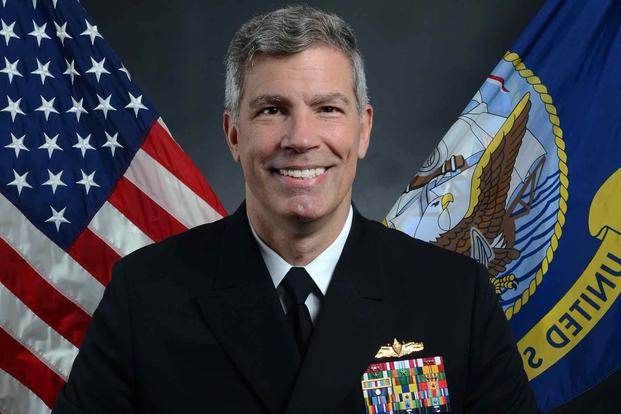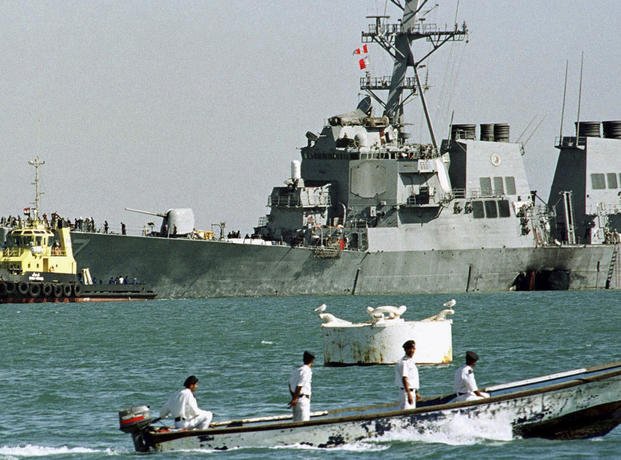On Oct. 12, 2000, two suicide bombers in a small boat laden with explosives targeted the guided-missile destroyer Cole. Seventeen crew members were killed and dozens more hurt in the late-morning blast after explosives ripped a 40-by-40-foot hole through the destroyer's port side. The Cole was on a refueling stop in Yemen's Aden Harbor at the time.
Retired Cmdr. Kirk Lippold, the Cole's commanding officer, recalled how his crew sprang into action, despite the ship's 1MC announcing system -- along with its back-up battery -- failing.
"They literally fell back on the training," Lippold said of his crew. "No one panicked. They set about dividing into three groups: damage control to save the ship, triage to say their shipmates, and security to prevent what could be another attack."
The response was extraordinary. In an age when sailors weren't expecting an act of war to hit their vessel -- this was nearly a year before the 2001 terror strikes in the U.S. -- they reacted. The Cole, because of their actions, was saved. The destroyer remains operational today.
In May 2025, just before the 25th anniversary of the attack, a military judge postponed the trial until 2026 to give defense lawyers more time to prepare for the death penalty case, The New York Times reported.
"The defendant, Abd al-Rahim al-Nashiri, is accused of helping to orchestrate the attack by two suicide bombers who blew up a bomb-laden skiff alongside the Cole during a refueling stop off Aden, Yemen," according to the Times.

Much has been written about what the crew did in the hours and days following the attack, resulting in numerous awards and commendations. For two senior Navy officers who were aboard the Cole when that blast hit, Lippold's candor about the emotional effects it would have on the crew left a mark.
Before post-traumatic stress and resiliency training were part of every service member's lexicon, Lippold gathered his crew to tell them, "It's normal for you to feel this way."
Trinque, who later was named assistant commander for career management with Navy Personnel Command, recalled: "For him to come out and tell us explicitly that we should expect to need help and need to talk to people, and that none of us were immune to the stresses that we were going through and were going to be going through, was incredibly powerful."
Capt. Joseph Gagliano, Destroyer Squadron 60's commodore, agrees. After two decades of war overseas, he said the Navy is much more educated on post-traumatic stress than it was in October 2000.
"It was something of a foreign concept to us at the time, so I was grateful that he introduced it," Gagliano said.

Lippold, the son of a psychologist who at one point specialized in stress management, recognized the likely struggle ahead. It was imperative, he said, that his crew understood that the anger, anxiety, agitation, lethargy and sleeplessness they were dealing with were normal responses.
"'It's OK,'" he recalled telling the crew. "'It's your mind processing through this attack and the aftermath of what's happened in the fact that we're prying our shipmates out of the wreckage and giving them honors departures, ceremonies, or carrying them off in body bags.'"
They would get through it, the former CO added, but had to do it together.
Cole's Legacy
Each year, Lippold said, he reflects on the 17 fallen, the injured, and what his crew did to save their ship. He recalled facing pressure from Washington and top Navy leaders to allow some of his crew to leave the ship in the aftermath of the attack. He pushed back, saying it was important to keep the crew intact.
They pulled out of port together, he said, and they would go home together. While not everyone was thrilled with the decision, the former commanding officer said he remains grateful he made it.
"In the long view of history, that decision had a bigger impact than any I made, because that bonded us together as a crew," he said.
The crew not only leaned on each other right after the attack, but also in the years since. Trinque calls the bonds forged that day in Yemen "family-like."

The admiral recalled telling Lippold when psychologists visited the crew after the attack that he didn't need to talk to them.
"I think I made the mistake of saying 'touchy-feely' to Kirk Lippold at one point and he said, 'You're not going to say that. One, you probably need the help as well as anybody else, but two, as the department head in the ship, if anybody hears you saying that, then you're pushing them away.'"
For an officer early in his career, that was an important lesson, Trinque said.
"Leaders ... need to make sure that we are just pounding home to our sailors that [help] is there, it is right to do this," he said. "It is a way for us to ensure that people can keep serving and not just deal with things, but overcome them."
Gagliano said the Cole attack affected his leadership style, too.
"It informs my understanding of warfighting," he said. "... The lessons I learned on October 12th allow me to convey in personal terms how warfighters react under stress and how we can prepare them ahead of time."
Making sure sailors are battle-ready is a point Gagliano said he emphasizes when speaking with officers and chiefs on Destroyer Squadron 60 ships.
"We were attacked by terrorists, but the coming great power war will come from China or Russia," he added. "Everything our sailors do must center on preparedness for the coming war."
Having leaders in the fleet who were on the Cole strengthens the Navy and helps make the nation safer, Lippold said. Trinque commanded a destroyer in the same class as the Cole, and Gagliano is leading crews in Europe.
Trinque said if there's one positive out of the attack, it's that he can explain to his sailors why their training matters.
"Gone are the days of 'because I said so' leadership," he said. "... I have an experience that I can use to help answer some of those questions. I can tell you, my shipmate, why we are doing this kind of training, and how it has served me."
In the aftermath of the Cole attack and years of combat in the Middle East, Navy leaders have stressed that training and good physical, mental and spiritual health build resiliency. The final battle problem at Great Lakes in Illinois, where sailors go to boot camp, is also modeled after the challenges the Cole crew faced.
Gagliano said he hopes it reminds sailors of the seriousness of their business.
"There are many reasons sailors join today's Navy -- service to country, quality employment, education benefits -- but in the end, we are a warfighting organization.
"Every sailor needs to be ready every day," he said.
Want to Know More About the Military?
Be sure to get the latest news about the U.S. military, as well as critical info about how to join and all the benefits of service. Subscribe to Military.com and receive customized updates delivered straight to your inbox.













